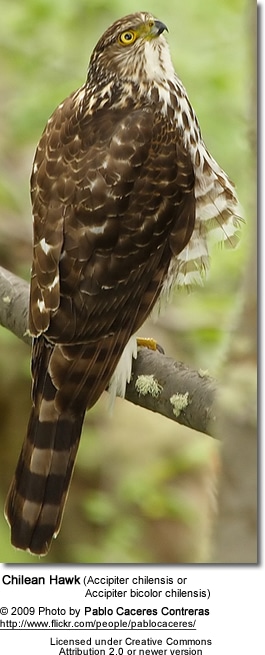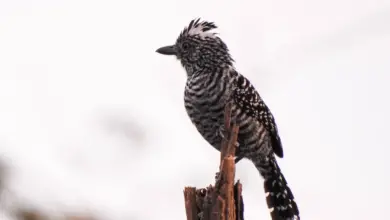Scale-throated Hermit
The Scale-throated Hermits (Phaethornis eurynome) is a South American hummingbird found in or near the Atlantic rain forests in north-eastern Argentina, south-eastern Brazil, and eastern Paraguay.
- In Brazil, they are most common in the following ecoregions: Alta Paraná Atlantic forests (southern Brazil), Araucaria moist forests (mountainous areas of southern Atlantic Brazil), Bahia interior forests, Humid Chaco (southwestern Brazil) and Serra do Mar coastal forests (southern extremes of eastern Brazilian rain forest).
- In Argentina, they mostly occur in Alta Paraná Atlantic forests (western Argentina), Humid Chaco (northeastern Argentina), and Southern Cone Mesopotamian savanna.
- In Paraguay, they inhabit Alta Paraná Atlantic forests and Humid Chaco (center of Paraguay).
Preferred Habitats:
They occur in tropical and subtropical moist broadleaf forests, grasslands, savannas, shrublands, and flooded grassland areas
Status
This species is generally common within its range.
Subspecies and Distribution:
- Phaethornis eurynome eurynome (Lesson, 1832) – Nominate Race
- Range: Southeastern Brazil (Bahia to Rio Grande do Sul).
- Phaethornis eurynome paraguayensis (M. Bertoni and W. Bertoni, 1901)
- Range: Eastern Paraguay and northeastern Argentina (Misiones)
A proposed “Black-billed Hermit”, described as Phaethornis nigrirostris, turned out to be a mutant Scale-throated Hermit – with an all-black bill.
Alternate (Global) Names:
In Brazil, this hermit is known as Rabo-branco-de-garganta-rajada.
Spanish: Ermitaño Escamoso; Portuguese: Rabo-branco-de-garganta-rajada French: Ermite eurynome German: Schuppenkehl-Schattenkolibri / Schuppenkehleremit; Italian: Colibrì del sole becconero;Finnish: suomuerakkokolibri; Japanese: hashiguroyumihachidori; Dutch: Schubkeel-heremietkolibrie; Norwegian: Skjellstrupeeremitt; Polish: pustelnik luskogardly;Slovak: slnecnícek lesný; Swedish: Fjällstrupseremit
Description
The Scale-throated Hermits weigh on average 4 grams or 0.14 oz. Its plumage is mostly green and a coppery brown. It has a dark band from its eyes down to its throat contrasting against the white stripe right below. Its most distinctive features are the dark feathers with greyish/brownish edging, giving it a scaly appearance. It has broad white tips to the tail. The upper bill is dark and the lower bill is yellowish.
Similar Species: The Scale-throated Hermit looks similar to the Pale-bellied Hermit, (Phaethornis anthophilus) found in Colombia, Panama, and Venezuela.
Nesting / Breeding
Hummingbirds in general are solitary and neither live nor migrate in flocks; and there is no pair bond for this species – the male’s only involvement in the reproductive process is the actual mating with the female.
During the breeding season, the males of many Hermit species form leks (= competitive mating displays) and congregate on traditional display grounds. Once a female enters their territory, they display for her. Their display may entail wiggling their tails and singing. Willing females will enter the area for the purpose of choosing a male for mating. Oftentimes she will choose the best singer.
He will separate from the female immediately after copulation. One male may mate with several females. In all likelihood, the female will also mate with several males. The males do not participate in choosing the nest location, building the nest, or raising the chicks.
The female Scale-throated Hermits is responsible for building the remarkable cone-shaped nest which hangs by a single strong string of spiders’ silk and/or rootlets from some overhead support, which could be a branch or the underside of the broad leaves of, for example, Heliconia plants, banana trees or ferns about 3 – 6 ft (1 – 2 m) above ground.
However, these unusual nests have been found beneath bridges, in highway culverts and even hanging from roofs inside dark buildings. The nest is often near a stream or waterfall.
It is constructed out of plant fibers woven together and green moss on the outside for camouflage in a protected location.
She lines the nest with soft plant fibers, animal hair, and feathers down, and strengthens the structure with spider webbing and other sticky material, giving it an elastic quality to allow it to stretch to double its size as the chicks grow and need more room.
The average clutch consists of two white eggs, which she incubates alone, while the male defends his territory and the flowers he feeds on. The young are born blind, immobile, and without any down.
The female alone protects and feeds the chicks with regurgitated food (mostly partially digested insects since nectar is an insufficient source of protein for the growing chicks). The female pushes the food down the chicks’ throats with her long bill directly into their stomachs.
As is the case with other hummingbird species, the chicks are brooded only the first week or two and left alone even on cooler nights after about 12 days – probably due to the small nest size. The chicks leave the nest when they are about 20 days old.
Diet / Feeding
The Scale-throated Hermits primarily feed on nectar taken from a variety of brightly colored, scented small flowers of trees, herbs, shrubs, and epiphytes. They favor flowers with the highest sugar content (often red-colored and tubular-shaped), such as the Centropogon cornutus, Costus spiralis, and Heliconia rostrata (false bird of paradise)
Hermits are “trap-line feeders”. This refers to a feeding technique that entails visiting plants along a long route (in this case of up to 0.6 miles or 1 km) – as opposed to most other hummingbird species which generally maintain feeding territories in areas that contain their favorite plants (those that contain flowers with high energy nectar), and they will aggressively protect those areas.
Hummingbird Resources
- Hummingbird Information
- Hummingbird Amazing Facts
- Attracting Hummingbirds to Your Garden
- Hummingbird Species
- Feeding Hummingbirds




